In today’s interconnected world, a strong global talent acquisition strategy is essential for organizations aiming to harness a diverse and skilled workforce. As businesses expand globally, attracting top talent from different regions becomes crucial for driving innovation and growth.
To begin, organizations need to clearly define their global talent needs by identifying key roles and skills required for international expansion. Understanding local job markets and labor trends helps tailor recruitment strategies effectively. Utilizing advanced recruitment technologies like AI tools can streamline candidate sourcing and screening across different geographies, allowing businesses to be more efficient and precise in their hiring process.
A compelling employer brand is vital when attracting global talent. Highlighting your company’s culture, values, and career opportunities in a way that resonates with diverse audiences is key. Tailoring your messaging to reflect regional preferences ensures that candidates clearly understand what makes your organization an appealing workplace.
Localizing your recruitment efforts is another important strategy. Recognizing regional differences in work culture, job market conditions, and candidate expectations can help customize your approach. This may involve adjusting job descriptions, interview processes, or employer branding to align with the specific cultural context of each region.
Diversity and inclusion should be central to any global talent acquisition strategy. By implementing fair and unbiased recruitment practices, organizations can access diverse talent pools and foster an inclusive environment where employees from various backgrounds can thrive.
Finally, promoting international collaboration within your recruitment teams is essential. Encouraging cooperation among global teams ensures a cohesive approach to talent acquisition. Sharing insights and best practices helps organizations continuously improve and adapt their global hiring strategies.
AI in HR: How to Use Artificial Intelligence to Improve Recruitment
Artificial Intelligence (AI) is revolutionizing recruitment by streamlining processes and helping organizations make smarter hiring decisions. AI tools can automate candidate sourcing, enabling companies to quickly identify top candidates by analyzing large volumes of resumes based on specific criteria. This reduces the workload on human recruiters and accelerates the hiring process.
AI also enhances candidate screening by utilizing machine learning algorithms to evaluate qualifications and experience against job requirements. This improves the efficiency of shortlisting candidates, saving time and resources.
Moreover, AI-powered chatbots can engage with candidates throughout the recruitment journey, providing updates and answering questions, which significantly enhances the candidate experience. Predictive analytics, another powerful AI tool, can help organizations predict candidate success by analyzing data from past hiring processes. This allows for better alignment between hiring decisions and long-term business goals.
AI also plays a significant role in minimizing unconscious bias in hiring. By focusing on objective criteria and standardizing evaluations, AI helps ensure a fairer, more diverse hiring process.
The Future of Hybrid Work: Best Practices for 2024
As hybrid work becomes the norm, creating a strong remote work culture is key to maintaining engagement and inclusivity. Regular virtual team-building activities and recognition programs help bridge the gap between remote and in-office employees, fostering a sense of belonging.
Organizations should adopt a clear framework that defines when employees should be in the office and when they can work remotely. This promotes a balanced approach and ensures flexibility while maintaining productivity.
Investing in the right tools and technology is essential for successful hybrid work. Reliable communication platforms, project management tools, and collaboration software are necessary to keep teams connected and ensure smooth workflows across different locations. Additionally, a shift from measuring hours worked to evaluating outcomes achieved helps encourage a results-oriented culture that thrives in a hybrid environment.
Prioritizing employee health and well-being is crucial in a hybrid work model. Offering mental health resources, flexible schedules, and other well-being programs helps prevent burnout and supports work-life balance. Ensuring equal access to information and opportunities for all employees—whether they are working remotely or in-office—strengthens communication and collaboration within the organization.
By adopting these strategies, organizations can successfully navigate the challenges of global talent acquisition and hybrid work while fostering a workplace culture focused on innovation, inclusion, and success.

#GlobalTalent #TalentAcquisition #DiversityAndInclusion #EmployerBranding #RecruitmentStrategy #InternationalExpansion #CrossCulturalHiring #DiverseWorkforce #TalentSourcing #HRStrategy #GlobalRecruitment #InclusiveHiring
























